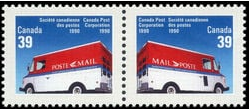 Do you collect Se-tenant stamp pairs? Since the very beginning of stamp collecting, the most common stamps to collect are “singles.” But there are so many other ways to collect stamps and so many different formats to choose from. Philatelists also collect stamps as pairs, blocks, strips, booklets, souvenir sheets, and the list goes on. Take a look at Se-tenant stamp pairs with me!
Do you collect Se-tenant stamp pairs? Since the very beginning of stamp collecting, the most common stamps to collect are “singles.” But there are so many other ways to collect stamps and so many different formats to choose from. Philatelists also collect stamps as pairs, blocks, strips, booklets, souvenir sheets, and the list goes on. Take a look at Se-tenant stamp pairs with me!
WHAT IS A SE-TENANT PAIR?
A regular pair is two identical stamps that are still attached to one another. Se-tenant stamps are also still attached but have different designs from each other. Se-tenant comes from a French word that, when translated, means “holding itself together” or “held together.” In this case, the two stamps are held together by their shared perfs.
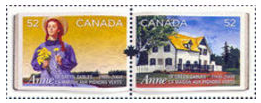
There are some cases when the images on each stamp, while different from each other make for one complete image when placed side-by-side. Se-tenant stamps that form a complete image when left attached to one another can also come in strips of three or four stamps or blocks of four.
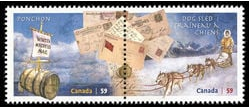
Philatelists refer to a strip of three Se-tenant stamps that form a complete design as a “triptych” (from the Greek word meaning “three parts”). They also refer to a strip or block of four Se-tenant stamps which together form a complete design as a “quadripartition” (from the Latin meaning “divided into four parts”).
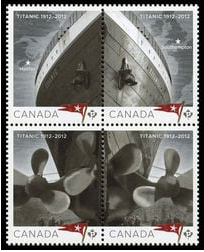
OTHER INTERESTING PAIRS TO COLLECT
Besides the Se-tenant pair, you can also collect other types of pairs. These pairs are technically also “Se-tenant,” but possess distinctive characteristics which give them their own particular identity.
Tête-bêche pair: This word comes from the French meaning “top-to-tail.” A tête-bêche pair is two stamps that are Se-tenant, but one stamp is printed upside down. Tête-bêche pairs are often the result of a printing error. However, the printer sometimes printed them that way on purpose if it was part of the design. When it’s a result of a printing error, such pairs can be quite rare and obviously very valuable to a collector.
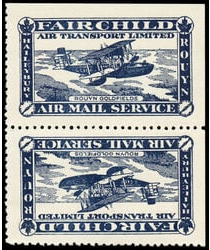
Gutter pair: A gutter pair is also Se-tenant, with the “gutter” still running between the two stamps. The “gutter” is a blank width of paper running the length and width of a stamp sheet. This made it easier for the printer to separate a sheet into panes. For instance, a blank gutter running down the middle of the sheet both vertically and horizontally meant the printer could easily divide the sheet into four panes.
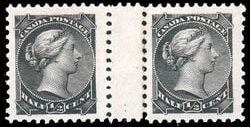
The configuration of a gutter pair is, therefore, stamp—gutter—stamp (the gutter has no postal value).
These gutters, or widths of paper, are usually blank. Stamp illustrators sometimes printed a design on the gutter. For instance, there are “Traffic Light Gutter Pairs.” The printers issued stamp sheets with a series of colored dots in the gutter. The dots represent the colors used in the printing of that stamp sheet.
![]()
Arpin Philately has many different types of Se-tenant pairs on offer. Check out our web boutique!